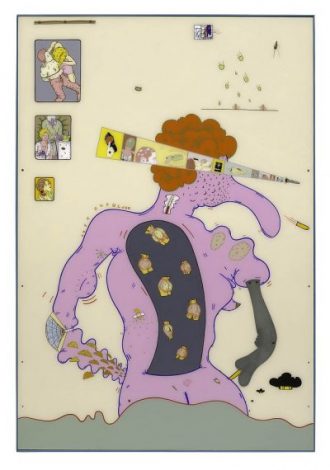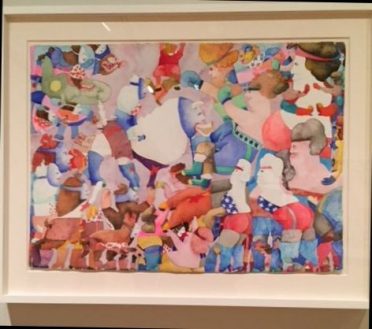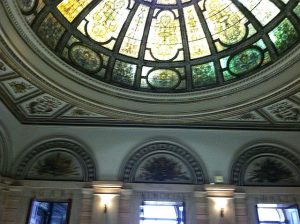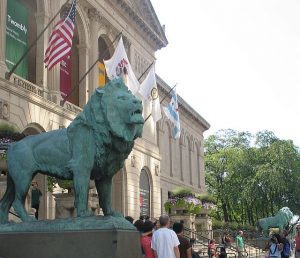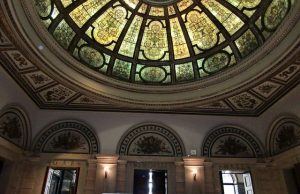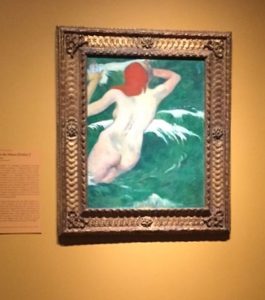
Georgia O’Keeffe. East River from the 30th Story of the Shelton Hotel, 1928. New Britain Museum of American Art, New Britain, Connecticut, Stephen B. Lawrence Fund. © Georgia O’Keeffe Museum on loan to Art Institute of Chicago
Highly Recommended
If you think you know something about Georgia O’Keeffe, be prepared to be pleasantly surprised.
Yes, there are one or two bleached skulls and a few super closeups of the interiors of flowers but overall this exhibit entitled “My New Yorks” focuses mainly on the work she did during the 1920s while married to famed American photographer and gallery owner Alfred Stieglitz.
The couple lived in the Shelton Hotel which at the time was one of the city’s tallest buildings offering the highest living space in NYC. From this vantage point the two visual artists could witness the growth of the sprawling metropolis.
They each derived inspiration from the crush of towering buildings and the interesting shapes provided while looking up during walks at street level as well as from their particular bird’s eye view.
O’Keeffe continued her work with abstracts by making impressions of the city in which she hoped to capture not what it looked like but rather how it felt. Massive structures dominated her canvases and spilled off the edges as though they were unable to be contained.
Her styles at this time seems to have generally drifted away from her previous more colorful works and amorphous forms. Instead, they varied from monochromatic abstracts to more realistic sepia-toned cityscapes reminiscent of Stieglitz’ photos
They also went to more colorful waterfront images and compositions that included shocks of color between or behind a darker field of monolithic buildings as though the natural world was trying to breakthrough this concrete barrier.
It’s notable to mention that her work is virtually devoid of human subjects or foliage. One exception depicts a small sprig from what might be the stem of a flower comprised of a few green leaves on a windowsill with the sharp-edged shapes of the city below. This is one of the few organic and curved subjects in what is otherwise a collection of geometric designs drawn with nearly draftsman like precision.
It is during this time that O’Keeffe made the first of what would be many visits to the Southwest. She brought back at least one cow skull which adorned her apartment terrace and also many bleached bones. It is here in New York that she began to work with the subject matter that would be most identified with her.
Another odd exception that includes organic forms is the random placement of colorful flowers in a 1932 work entitled “Manhattan.”
The large composition of skyscrapers is, itself, more colorful. It has been suggested that the flowers are a nod toward her growing love and an interest in the American Southwest that will ultimately come to dominate the later part of her career.
It’s fitting that this collection be exhibited here in Chicago. Born in Sun Prairie, Wisconsin, she studied at the School of the Art Institute from 1905 to 1906. In later years, she made several donations of her work and the works of Stieglitz to the museum.
A complimentary audio tour is available on the free AIC app which can be listened to via your smartphone.
Details: Georgia O’Keeffe: “My New Yorks” is at the Art Institute of Chicago at Michigan Avenue and Monroe through September 22, 2024. General admission plus an extra fee for the exhibit is required. For details visit Georgia O’Keeffe: “My New Yorks” | The Art Institute of Chicago (artic.edu)
Reno Lovison
(For more about Georgia O’Keefe visit Fun Facts.)



